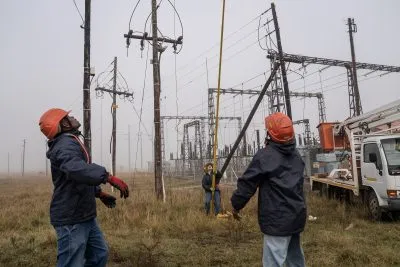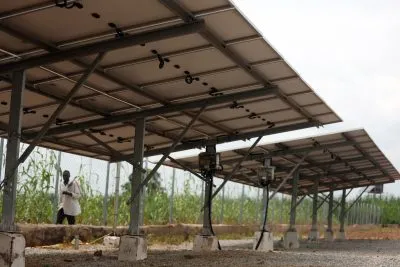Though necessitated by rolling blackouts, there has been decisive, progressive action from South Africa’s policymakers on increased independent power production. Most recently, this has resulted in the announcement of looser regulations around self-generation that will allow companies to produce up to 100 MW of power without licensing.
The continued unshackling of responsibility from the state regulator is a huge step in the right direction. It speaks to essential trimming of red tape, and increased opportunities for IPPs alongside job creation, but also the collaborative approach of a government determined to get energy policy correct.
Ironing out the details of this process involved distilling views of the various stakeholder groups into a harmonious policy approach. In addressing the country’s power shortages, the temptation to dive headfirst into action rather than giving the issue due deliberation could have resulted in complications further down the line. However, the importance of forming a consensus and aligning stakeholder views has allowed the government to build a strong foundation on which to work, regardless of how painstakingly slow.
An incentive to investment?
South Africa’s economy is heavily industrialised and important sectors remain extremely power-intensive. Raising the self-generation limit will come as a relief to the likes of the mining industry, who have long been lobbying for such reform and have a significant pipeline of energy projects to roll out over the coming years. Erratic power supply has cost the industry billions of dollars, they estimate, which has limited further investment in the sector. With the new self-generation limits, we can reduce and ultimately avoid this kind of disruption in other parts of the economy.
This move will attract the interest of multinationals beyond the extractives space, and fuel an existing appetite as exhibited by Amazon’s efforts to power its data centres through self-generated renewable power, transported along the transmission lines of state generator Eskom. The historic move, in which African Infrastructure Investment Managers (AIIM) is an investor, offers a glimpse into the possibilities available for increasing interest in South Africa as an investment destination.
Push to renewables
As Africa’s largest per capita emitter of greenhouse gases, easing reliance on fossil fuels is essential. The abundance of renewable energy generation sources in the country has been tapped into successfully through the Renewable Energy Independent Power Producer Procurement (REIPPP) programme. Over its lifetime, procurement costs of wind and solar have fallen by 37% and 69% respectively and helped to nearly double the number of IPPs involved in the country.
REIPPP is an essential driver to diversifying the nation’s energy mix and hitting planned targets. As contemplated by the Integrated Resource Plan the country envisages an energy mix to which solar and wind will contribute a quarter by 2030. Its programmatic structure addresses some major hindrances around investment in South Africa’s energy sector, as well as the continent more widely.
Fourteen years of policy development has produced a transparent framework, enabling significant private sector investment in the renewables space. A mostly continuous pipeline of bankable projects is making it easier to inject the increasing amounts of private capital into attractive investments. Simultaneously, a robust regulatory framework eases investor trepidation, capturing the best of a competitive landscape.
The IPP market is developing well as a result – so much so that eThekwini is the country’s first municipality to advertise a tender for private power generation. This will help achieve their desired balance of sustainable, dispatchable and reliable power generation, lowering costs of procurement, potentially serving as a blueprint for others looking to replicate it.
Lessons for the rest of Africa
The unbundling of Eskom and diminishing dominance of the state-owned utility is an essential step for South Africa and an important lesson for the continent as a whole. As of 2014, 21 countries in sub-Saharan Africa had state-owned utilities with no private sector participation. This aversion to private sector involvement is waning but has led to sclerotic state systems and driven up the cost of energy production.
This heightens the burden of subsidies, affecting the potential of much needed investment in power infrastructure and impacting production capacity, reducing regional GDP by an estimated 2%. Considering the energy generation potential of the continent, this negative economic impact should be marginal, if it should exist at all. Putting this into context, Africa has 40% of the world’s solar energy generation potential but contributes only 1% of global production.
Already around 10% of industrial, commercial, and residential consumers self-generate their electricity but this is far from what could be achieved from a coherent, sustainable policy environment. Such power is produced at well above market rates, impinging on profitability and productivity, as well as producing considerable environmental degradation. Unreliable energy and weak policy have served as major deterrents to investment across the continent.
This has been prominent in the mining sector and not just in South Africa. A drought in hydro-powered Zambia resulted in electricity shortages, translating into failure of the state utility to honour power purchase agreements with the mines. This contributed to a pullback in investments from the country’s primary export and foreign exchange earner. However, this is where South Africa’s trailblazing can set the right example to benefit its neighbours and contribute to improved economic stability.
As we roll out the African Continental Free Trade Agreement, there is growing emphasis to develop Africa as a whole: to embrace concerted efforts to boost productivity, increase efficiency and limit reliance on external players. South Africa may be acting in isolation in lifting self-generation limits, but it should do so knowing the entire continent is keeping a close eye.
Importance of private sector involvement
With only 10% of Africa’s energy mix forecast to come from non-hydro, renewable sources by 2030, any inclination of accelerating progress should be considered. As sovereign fiscal capacity is constrained during the pandemic, this opens the door for private sector involvement. Despite resistance, programmatic development like REIPPP, the World Bank’s Scaling Solar and GETFiT are encouraging this investment.
Investors are gaining a better understanding of the continent’s investment topography, more accurately assessing risk and awakening to the development potential that public-private partnerships (PPPs) can create. This is reflected in the effective tripling of the value of PPPs in the decades 2000-09 and 2010-19.
We must temper the optimism of progress with the tonic of the challenge ahead. Funding the investment gap in African energy infrastructure requires an effective, robust regulatory framework across the board, attracting private capital and closing the gap in access to energy. South Africa is banging the drum for the continent to march to its beat.
Paul Boynton is the CEO of Old Mutual Alternative Investments.
Want to continue reading? Subscribe today.
You've read all your free articles for this month! Subscribe now to enjoy full access to our content.
Digital Monthly
£8.00 / month
Receive full unlimited access to our articles, opinions, podcasts and more.
Digital Yearly
£70.00 / year
Our best value offer - save £26 and gain access to all of our digital content for an entire year!
 Sign in with Google
Sign in with Google 




